Deck 11: Quadratic Functions and Models
Question
Question
Question
Question
Question
Question
Question
Question
Question
Question
Question
Question
Question
Question
Question
Question
Question
Question
Question
Question
Question
Question
Question
Question
Question
Question
Question
Question
Question
Question
Question
Question
Question
Question
Question
Question
Question
Question
Question
Question
Question
Question
Question
Question
Question
Question
Question
Question
Question
Question
Question
Question
Question
Question
Question
Question
Question
Question
Question
Question
Question

Unlock Deck
Sign up to unlock the cards in this deck!
Unlock Deck
Unlock Deck
1/61
Play
Full screen (f)
Deck 11: Quadratic Functions and Models
1
Select the graph of the quadratic function .Identify the vertex and axis of symmetry. ?
A)?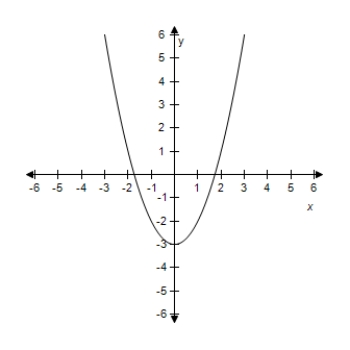 ?
?
Vertex: (0,-3)
Axis of symmetry: y-axis
?
B)?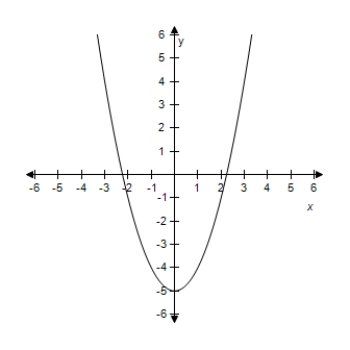 ?
?
?
Vertex: (0,-5)
Axis of symmetry: y-axis
C)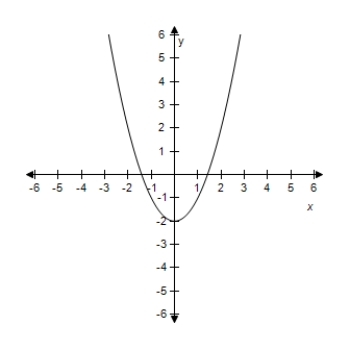 ?
?
?
Vertex: (0,-2)
Axis of symmetry: y-axis
D)?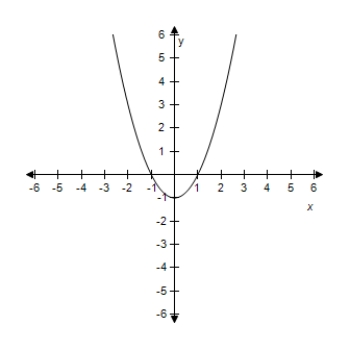 ?
?
?
Vertex: (0,-1)
Axis of symmetry: y-axis
E)? ?
?
?
Vertex: (0,-4)
Axis of symmetry: y-axis
A)?
 ?
?Vertex: (0,-3)
Axis of symmetry: y-axis
?
B)?
 ?
??
Vertex: (0,-5)
Axis of symmetry: y-axis
C)
 ?
??
Vertex: (0,-2)
Axis of symmetry: y-axis
D)?
 ?
??
Vertex: (0,-1)
Axis of symmetry: y-axis
E)?
 ?
??
Vertex: (0,-4)
Axis of symmetry: y-axis
?  ?
?
Vertex: (0,-3)
Axis of symmetry: y-axis
?
 ?
?Vertex: (0,-3)
Axis of symmetry: y-axis
?
2
The height y (in feet)of a punted football is given by? ? where x is the horizontal distance (in feet)from the point at which the ball is punted.
What is the maximum height of the punt? (Round your answer to two decimal places. )
?
A)123.61
B)113.61
C)103.61
D)83.61
E)93.61
What is the maximum height of the punt? (Round your answer to two decimal places. )
?
A)123.61
B)113.61
C)103.61
D)83.61
E)93.61
83.61
3
Select the graph of the function .Compare the graph of this function with the graph of . ?
A)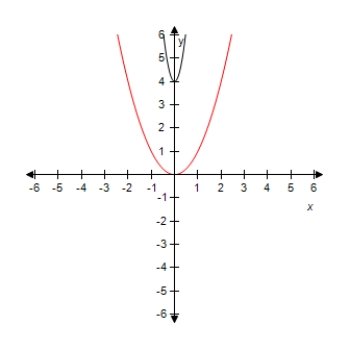 ?
?
?
Horizontal shrink and vertical shift.
B)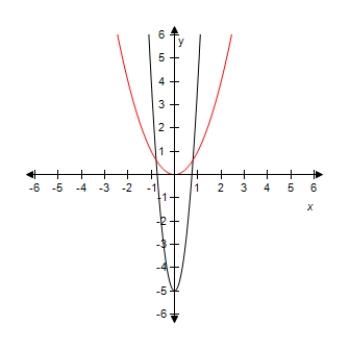 ?
?
?
Horizontal shrink and vertical shift.
C)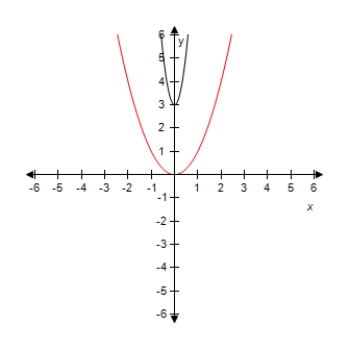 ?
?
?
Horizontal shrink and vertical shift.
D)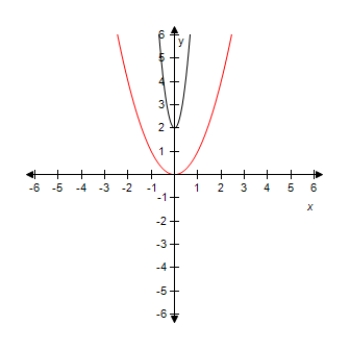 ?
?
?
Horizontal shrink and vertical shift.
E)?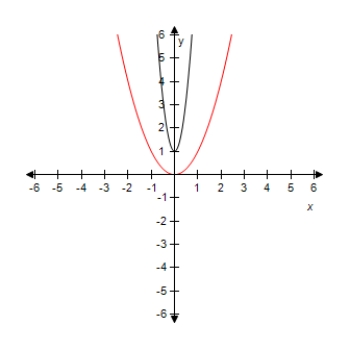 ?
?
?
Horizontal shrink and vertical shift.
A)
 ?
??
Horizontal shrink and vertical shift.
B)
 ?
??
Horizontal shrink and vertical shift.
C)
 ?
??
Horizontal shrink and vertical shift.
D)
 ?
??
Horizontal shrink and vertical shift.
E)?
 ?
??
Horizontal shrink and vertical shift.
 ?
??
Horizontal shrink and vertical shift.
4
Select the graph of the function .Compare the graph of this function with the graph of . ?
A)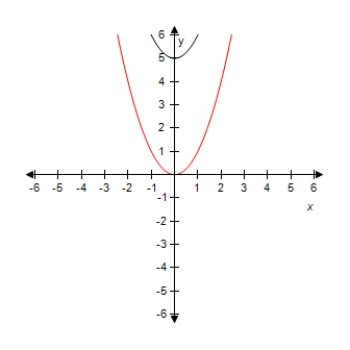 Vertical shift.
Vertical shift.
B)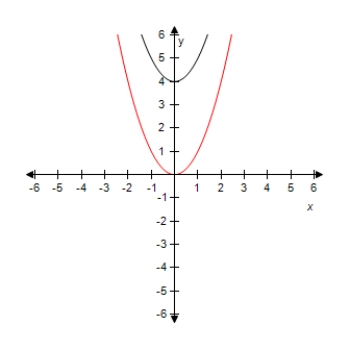 Vertical shift.
Vertical shift.
C)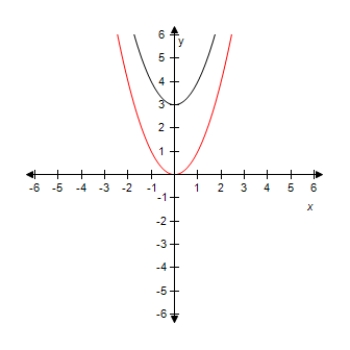 Vertical shift.
Vertical shift.
D)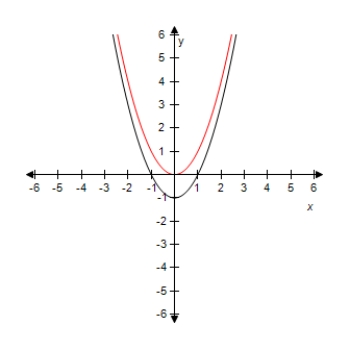 Vertical shift.
Vertical shift.
E)?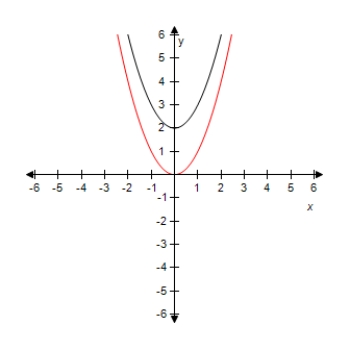 Vertical shift.
Vertical shift.
A)
 Vertical shift.
Vertical shift.B)
 Vertical shift.
Vertical shift.C)
 Vertical shift.
Vertical shift.D)
 Vertical shift.
Vertical shift.E)?
 Vertical shift.
Vertical shift.
Unlock Deck
Unlock for access to all 61 flashcards in this deck.
Unlock Deck
k this deck
5
Select the graph of the quadratic function .Identify the axis of symmetry. ?
A)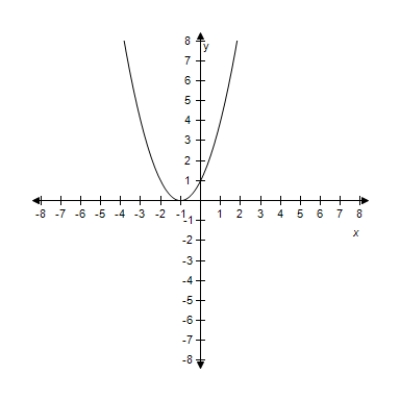 Axis of symmetry: x = -1
Axis of symmetry: x = -1
B)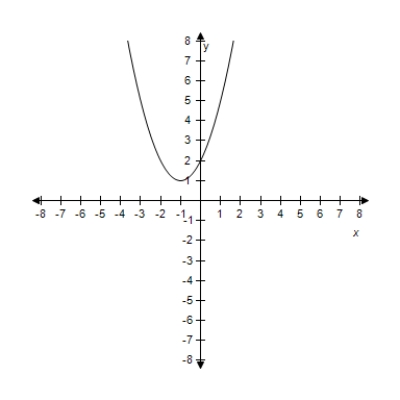 ?Axis of symmetry: x = -1
?Axis of symmetry: x = -1
C)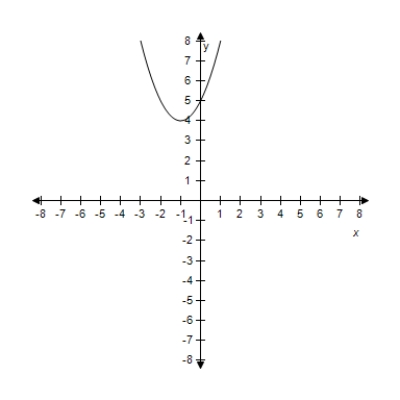 Axis of symmetry: x = -1
Axis of symmetry: x = -1
D)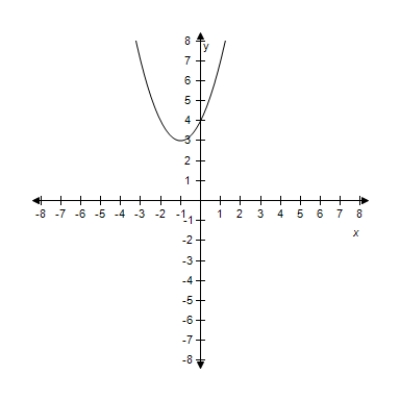 ?Axis of symmetry: x = -1
?Axis of symmetry: x = -1
E)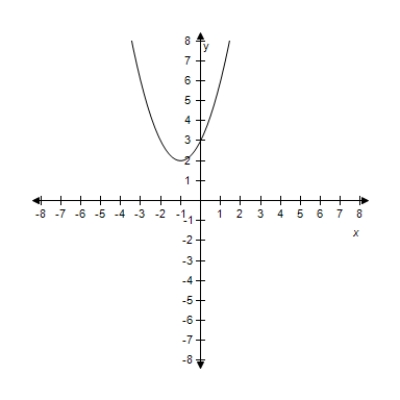 Axis of symmetry: x = -1
Axis of symmetry: x = -1
A)
 Axis of symmetry: x = -1
Axis of symmetry: x = -1B)
 ?Axis of symmetry: x = -1
?Axis of symmetry: x = -1C)
 Axis of symmetry: x = -1
Axis of symmetry: x = -1D)
 ?Axis of symmetry: x = -1
?Axis of symmetry: x = -1E)
 Axis of symmetry: x = -1
Axis of symmetry: x = -1
Unlock Deck
Unlock for access to all 61 flashcards in this deck.
Unlock Deck
k this deck
6
Select the graph of the function .Compare the graph of this function with the graph of . ?
A)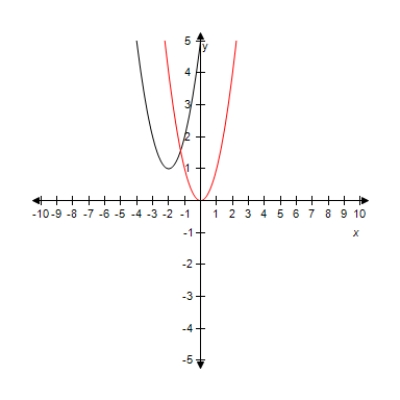 ?
?
Horizontal shift of 2 units to the right and vertical shift of 1 unit upward.
B)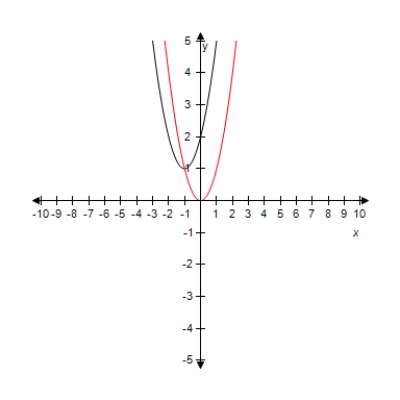 ?
?
Horizontal shift of 1 units to the right and vertical shift of 1 unit upward.
C)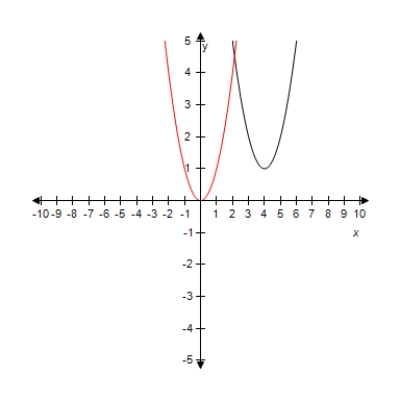 ?
?
Horizontal shift of 4 units to the right and vertical shift of 1 unit upward.
D)?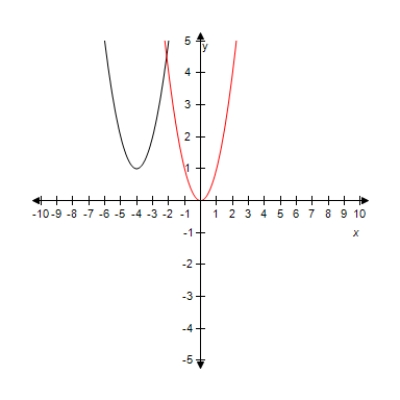 ?
?
Horizontal shift of 4 units to the right and vertical shift of 1 unit upward.
E)?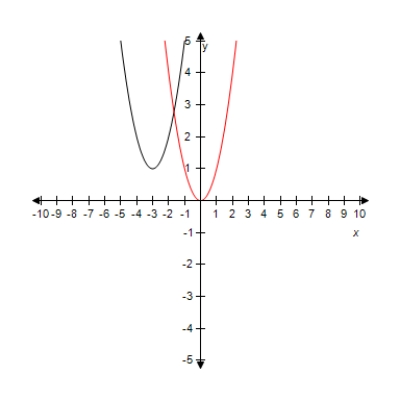 ?
?
Horizontal shift of 3 units to the right and vertical shift of 1 unit upward.
A)
 ?
?Horizontal shift of 2 units to the right and vertical shift of 1 unit upward.
B)
 ?
?Horizontal shift of 1 units to the right and vertical shift of 1 unit upward.
C)
 ?
?Horizontal shift of 4 units to the right and vertical shift of 1 unit upward.
D)?
 ?
?Horizontal shift of 4 units to the right and vertical shift of 1 unit upward.
E)?
 ?
?Horizontal shift of 3 units to the right and vertical shift of 1 unit upward.

Unlock Deck
Unlock for access to all 61 flashcards in this deck.
Unlock Deck
k this deck
7
Select the graph of the function .Compare the graph of this function with the graph of . ?
A)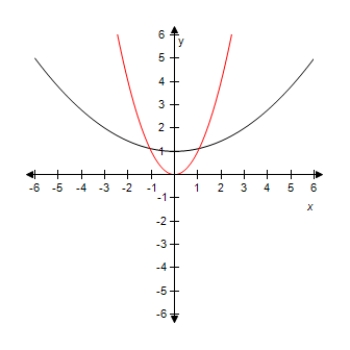 ?
?
?
Horizontal stretch and vertical shift.
B)? ?
?
?
Horizontal stretch and vertical shift.
C)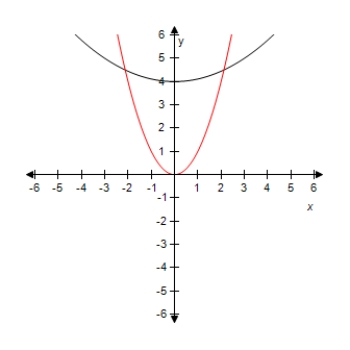 ?
?
?
Horizontal stretch and vertical shift.
D)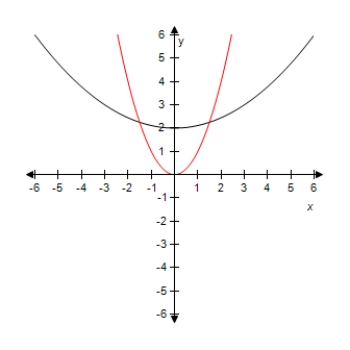 ?
?
?
Horizontal stretch and vertical shift.
E)?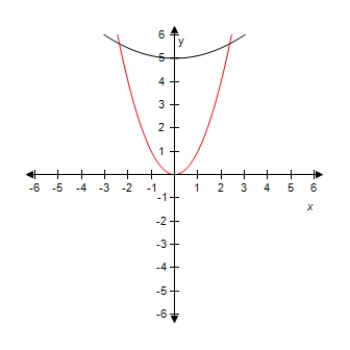 ?
?
?
Horizontal stretch and vertical shift.
A)
 ?
??
Horizontal stretch and vertical shift.
B)?
 ?
??
Horizontal stretch and vertical shift.
C)
 ?
??
Horizontal stretch and vertical shift.
D)
 ?
??
Horizontal stretch and vertical shift.
E)?
 ?
??
Horizontal stretch and vertical shift.

Unlock Deck
Unlock for access to all 61 flashcards in this deck.
Unlock Deck
k this deck
8
Find two positive real numbers whose product is a maximum.The sum is 140.
A)90,50
B)100,40
C)70,70
D)80,60
E)10,130
A)90,50
B)100,40
C)70,70
D)80,60
E)10,130

Unlock Deck
Unlock for access to all 61 flashcards in this deck.
Unlock Deck
k this deck
9
Find two positive real numbers whose product is a maximum.
The sum of the first and twice the second is 56.
(Round your answer to two decimal places. )
A)28,5.6
B)28,9.33
C)28,7
D)28,14
E)14,14
The sum of the first and twice the second is 56.
(Round your answer to two decimal places. )
A)28,5.6
B)28,9.33
C)28,7
D)28,14
E)14,14

Unlock Deck
Unlock for access to all 61 flashcards in this deck.
Unlock Deck
k this deck
10
Select the graph of the function .Compare the graph of this function with the graph of . ?
A)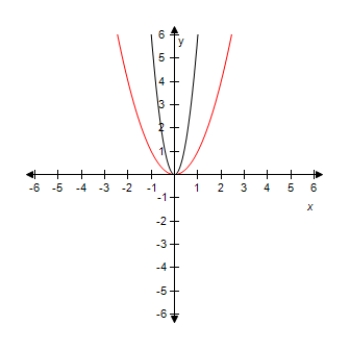 ?
?
Vertical stretch
B)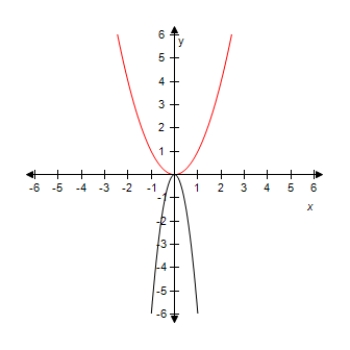 ?
?
Vertical stretch and reflection in x-axis
C)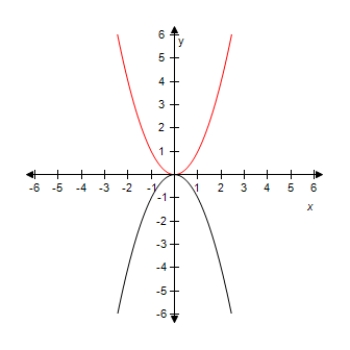 ?
?
?
Reflection in x-axis
D)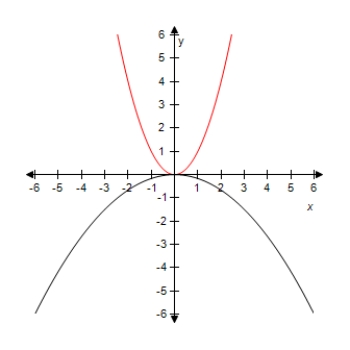 ?
?
?
Vertical shrink and reflection in x-axis
E) ?
?
?
Vertical shrink
A)
 ?
?Vertical stretch
B)
 ?
?Vertical stretch and reflection in x-axis
C)
 ?
??
Reflection in x-axis
D)
 ?
??
Vertical shrink and reflection in x-axis
E)
 ?
??
Vertical shrink

Unlock Deck
Unlock for access to all 61 flashcards in this deck.
Unlock Deck
k this deck
11
Select the graph of the function .Compare the graph of this function with the graph of . ?
A)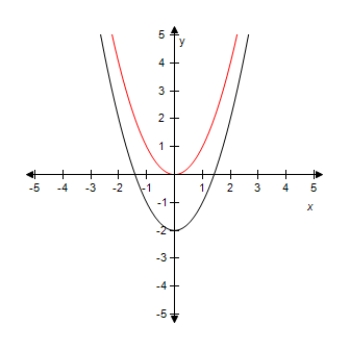 ?
?
?
Vertical shift.
B)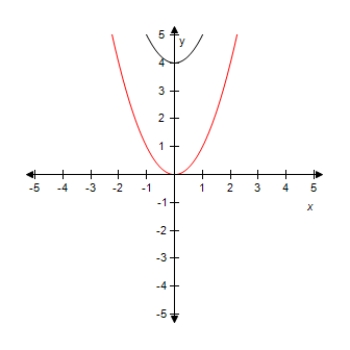 ?
?
?
Vertical shift.
C) ?
?
?
Vertical shift.
D)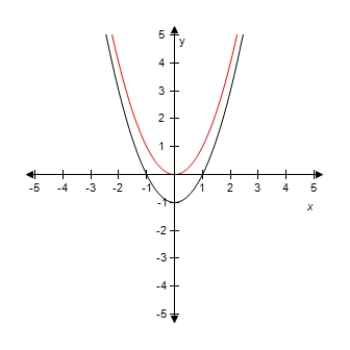 ?
?
?
Vertical shift.
E)?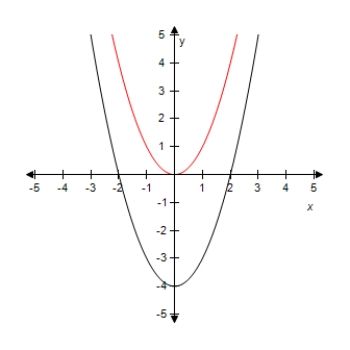 ?
?
?
Vertical shift.
A)
 ?
??
Vertical shift.
B)
 ?
??
Vertical shift.
C)
 ?
??
Vertical shift.
D)
 ?
??
Vertical shift.
E)?
 ?
??
Vertical shift.

Unlock Deck
Unlock for access to all 61 flashcards in this deck.
Unlock Deck
k this deck
12
Select the graph of the function .Compare the graph of this function with the graph of . ?
A)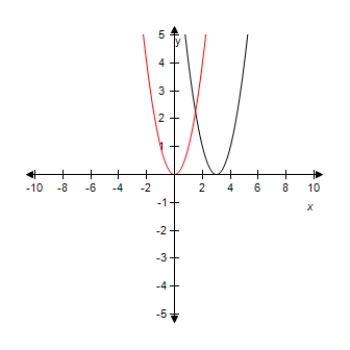 Horizontal shift 3 units to the right.
Horizontal shift 3 units to the right.
B)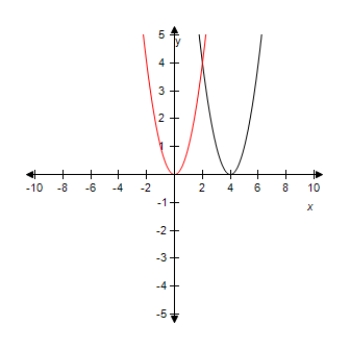 Horizontal shift 4 units to the right.
Horizontal shift 4 units to the right.
C) Horizontal shift 5 units to the right.
Horizontal shift 5 units to the right.
D)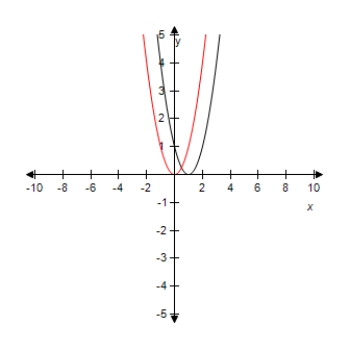 Horizontal shift 1 unit to the right.
Horizontal shift 1 unit to the right.
E)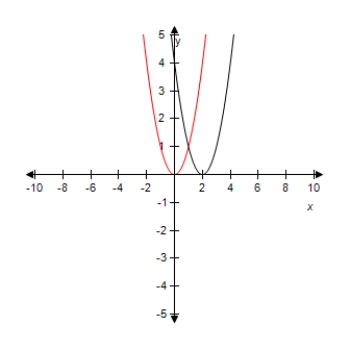 Horizontal shift 2 units to the right.
Horizontal shift 2 units to the right.
A)
 Horizontal shift 3 units to the right.
Horizontal shift 3 units to the right.B)
 Horizontal shift 4 units to the right.
Horizontal shift 4 units to the right.C)
 Horizontal shift 5 units to the right.
Horizontal shift 5 units to the right.D)
 Horizontal shift 1 unit to the right.
Horizontal shift 1 unit to the right.E)
 Horizontal shift 2 units to the right.
Horizontal shift 2 units to the right.
Unlock Deck
Unlock for access to all 61 flashcards in this deck.
Unlock Deck
k this deck
13
Select the graph of the quadratic function .Identify the vertex and axis of symmetry. ?
A)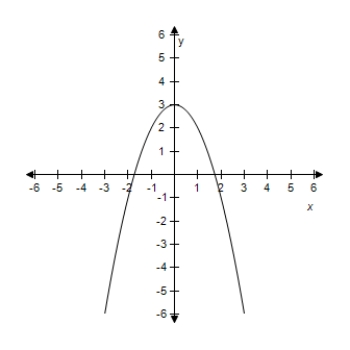 ?
?
?
Vertex: (0,3)
Axis of symmetry: y-axis
B)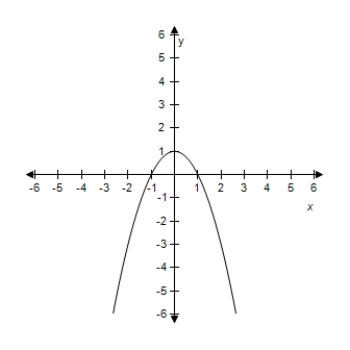 ?
?
?
Vertex: (0,1)
Axis of symmetry: y-axis
C)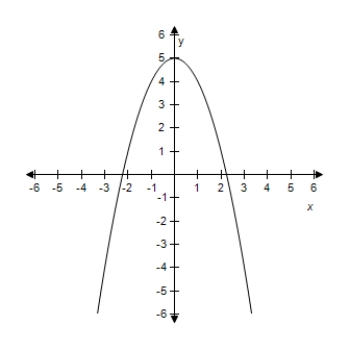 ?
?
?
Vertex: (0,5)
Axis of symmetry: y-axis
D)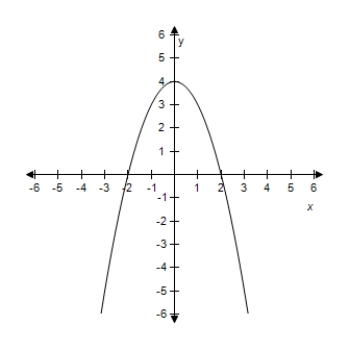 ?
?
?
Vertex: (0,4)
Axis of symmetry: y-axis
E)?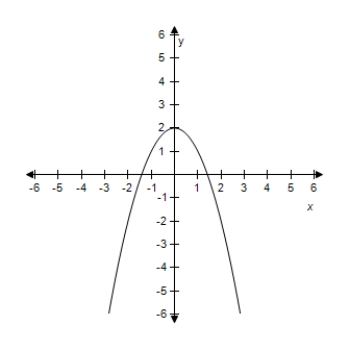 ?
?
?
Vertex: (0,2)
Axis of symmetry: y-axis
A)
 ?
??
Vertex: (0,3)
Axis of symmetry: y-axis
B)
 ?
??
Vertex: (0,1)
Axis of symmetry: y-axis
C)
 ?
??
Vertex: (0,5)
Axis of symmetry: y-axis
D)
 ?
??
Vertex: (0,4)
Axis of symmetry: y-axis
E)?
 ?
??
Vertex: (0,2)
Axis of symmetry: y-axis

Unlock Deck
Unlock for access to all 61 flashcards in this deck.
Unlock Deck
k this deck
14
A manufacturer of lighting fixtures has daily production costs of where C is the total cost (in dollars)and x is the number of units produced.How many fixtures should be produced each day to yield a minimum cost? (Round your answer to two decimal places. )
?
A)160
B)106.67
C)320
D)400
E)800 ?
?
A)160
B)106.67
C)320
D)400
E)800 ?

Unlock Deck
Unlock for access to all 61 flashcards in this deck.
Unlock Deck
k this deck
15
Select the graph of the quadratic function .Identify the vertex and axis of symmetry. ?
?
A)?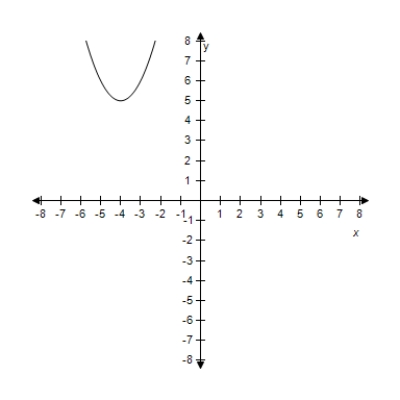 ?
?
Vertex: (-4,5)
Axis of symmetry: x = -4
B)? ?
?
Vertex: (-4,1)
Axis of symmetry: x = -4
C)?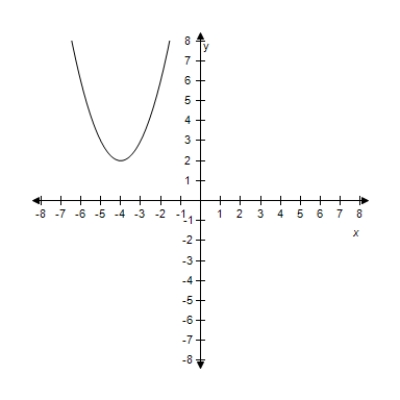 ?
?
Vertex: (-4,2)
Axis of symmetry: x = -4
D)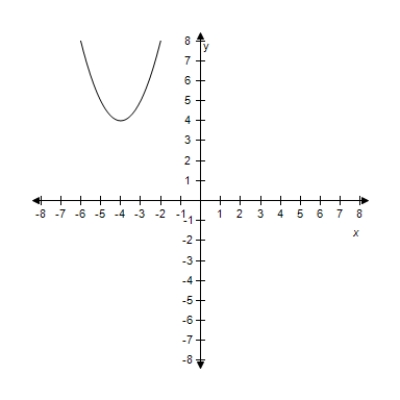 ?
?
Vertex: (-4,4)
Axis of symmetry: x = -4
E)? Vertex: (-4,3)
Vertex: (-4,3)
Axis of symmetry: x = -4
?
A)?
 ?
?Vertex: (-4,5)
Axis of symmetry: x = -4
B)?
 ?
?Vertex: (-4,1)
Axis of symmetry: x = -4
C)?
 ?
?Vertex: (-4,2)
Axis of symmetry: x = -4
D)
 ?
?Vertex: (-4,4)
Axis of symmetry: x = -4
E)?
 Vertex: (-4,3)
Vertex: (-4,3)Axis of symmetry: x = -4

Unlock Deck
Unlock for access to all 61 flashcards in this deck.
Unlock Deck
k this deck
16
Find two positive real numbers whose product is a maximum.
The sum of the first and three times the second is 48.
A)24,8
B)24,16
C)16,4
D)24,6
E)42,6
The sum of the first and three times the second is 48.
A)24,8
B)24,16
C)16,4
D)24,6
E)42,6

Unlock Deck
Unlock for access to all 61 flashcards in this deck.
Unlock Deck
k this deck
17
Select the graph of the quadratic function .Identify the vertex and axis of symmetry. ?
A)?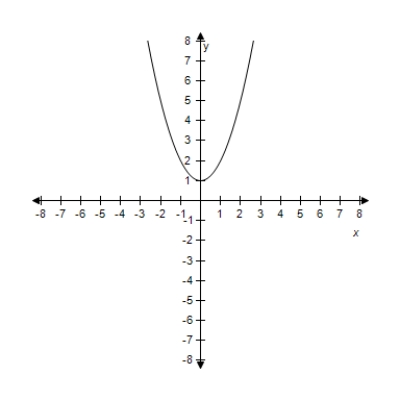 ?
?
?
Vertex: (0,1)
Axis of symmetry: y-axis
B)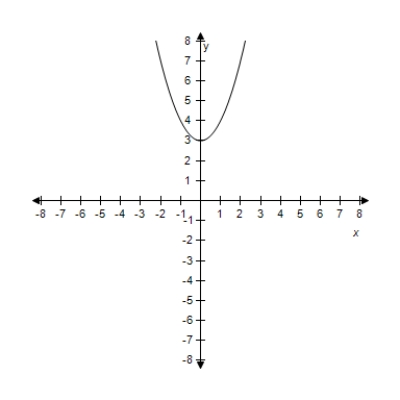 ?
?
?
Vertex: (0,3)
Axis of symmetry: y-axis
C)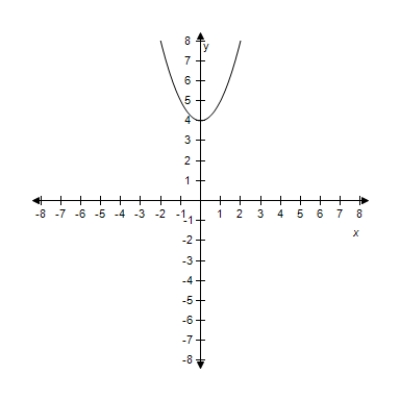 ?
?
?
Vertex: (0,4)
Axis of symmetry: y-axis
D)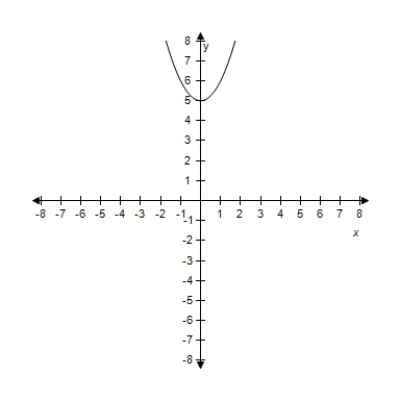 ?
?
Vertex: (0,5)
Axis of symmetry: y-axis
?
E)?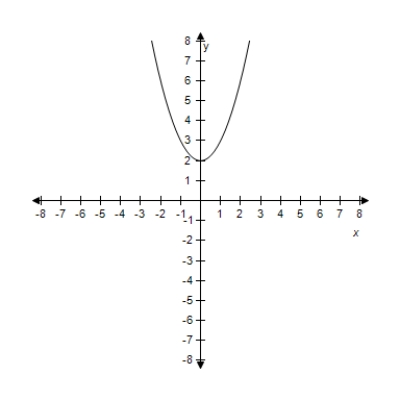 ?
?
Vertex: (0,2)
Axis of symmetry: y-axis
A)?
 ?
??
Vertex: (0,1)
Axis of symmetry: y-axis
B)
 ?
??
Vertex: (0,3)
Axis of symmetry: y-axis
C)
 ?
??
Vertex: (0,4)
Axis of symmetry: y-axis
D)
 ?
?Vertex: (0,5)
Axis of symmetry: y-axis
?
E)?
 ?
?Vertex: (0,2)
Axis of symmetry: y-axis

Unlock Deck
Unlock for access to all 61 flashcards in this deck.
Unlock Deck
k this deck
18
Select the graph of the function .Compare the graph of this function with the graph of . ?
A)![<strong>Select the graph of the function y = [ 2 ( x - 1 ) ] ^ { 2 } + 1 .Compare the graph of this function with the graph of y = x ^ { 2 } . ?</strong> A) ? ? Horizontal shift of 4 units to the right and vertical shift of 1 unit upward and horizontal shrink B)? ? ? Horizontal shift of 2 units to the right and vertical shift of 1 unit upward and horizontal shrink C)? ? ? Horizontal shift of 5 units to the right and vertical shift of 1 unit upward and horizontal shrink D) ? Horizontal shift of 1 units to the right and vertical shift of 1 unit upward and horizontal shrink E)? ? ? Horizontal shift of 3 units to the right and vertical shift of 1 unit upward and horizontal shrink](https://d2lvgg3v3hfg70.cloudfront.net/TB4590/11ea99db_b697_7c7c_94ac_b916dfcfbe77_TB4590_00.jpg) ?
?
?
Horizontal shift of 4 units to the right and vertical shift of 1 unit upward and horizontal shrink
B)?![<strong>Select the graph of the function y = [ 2 ( x - 1 ) ] ^ { 2 } + 1 .Compare the graph of this function with the graph of y = x ^ { 2 } . ?</strong> A) ? ? Horizontal shift of 4 units to the right and vertical shift of 1 unit upward and horizontal shrink B)? ? ? Horizontal shift of 2 units to the right and vertical shift of 1 unit upward and horizontal shrink C)? ? ? Horizontal shift of 5 units to the right and vertical shift of 1 unit upward and horizontal shrink D) ? Horizontal shift of 1 units to the right and vertical shift of 1 unit upward and horizontal shrink E)? ? ? Horizontal shift of 3 units to the right and vertical shift of 1 unit upward and horizontal shrink](https://d2lvgg3v3hfg70.cloudfront.net/TB4590/11ea99db_b697_7c7d_94ac_610b073c0ced_TB4590_00.jpg) ?
?
?
Horizontal shift of 2 units to the right and vertical shift of 1 unit upward and horizontal shrink
C)?![<strong>Select the graph of the function y = [ 2 ( x - 1 ) ] ^ { 2 } + 1 .Compare the graph of this function with the graph of y = x ^ { 2 } . ?</strong> A) ? ? Horizontal shift of 4 units to the right and vertical shift of 1 unit upward and horizontal shrink B)? ? ? Horizontal shift of 2 units to the right and vertical shift of 1 unit upward and horizontal shrink C)? ? ? Horizontal shift of 5 units to the right and vertical shift of 1 unit upward and horizontal shrink D) ? Horizontal shift of 1 units to the right and vertical shift of 1 unit upward and horizontal shrink E)? ? ? Horizontal shift of 3 units to the right and vertical shift of 1 unit upward and horizontal shrink](https://d2lvgg3v3hfg70.cloudfront.net/TB4590/11ea99db_b697_a38e_94ac_57ee511ed09a_TB4590_00.jpg) ?
?
?
Horizontal shift of 5 units to the right and vertical shift of 1 unit upward and horizontal shrink
D)![<strong>Select the graph of the function y = [ 2 ( x - 1 ) ] ^ { 2 } + 1 .Compare the graph of this function with the graph of y = x ^ { 2 } . ?</strong> A) ? ? Horizontal shift of 4 units to the right and vertical shift of 1 unit upward and horizontal shrink B)? ? ? Horizontal shift of 2 units to the right and vertical shift of 1 unit upward and horizontal shrink C)? ? ? Horizontal shift of 5 units to the right and vertical shift of 1 unit upward and horizontal shrink D) ? Horizontal shift of 1 units to the right and vertical shift of 1 unit upward and horizontal shrink E)? ? ? Horizontal shift of 3 units to the right and vertical shift of 1 unit upward and horizontal shrink](https://d2lvgg3v3hfg70.cloudfront.net/TB4590/11ea99db_b697_a38f_94ac_bd74ab83583d_TB4590_00.jpg) ?
?
Horizontal shift of 1 units to the right and vertical shift of 1 unit upward and horizontal shrink
E)?![<strong>Select the graph of the function y = [ 2 ( x - 1 ) ] ^ { 2 } + 1 .Compare the graph of this function with the graph of y = x ^ { 2 } . ?</strong> A) ? ? Horizontal shift of 4 units to the right and vertical shift of 1 unit upward and horizontal shrink B)? ? ? Horizontal shift of 2 units to the right and vertical shift of 1 unit upward and horizontal shrink C)? ? ? Horizontal shift of 5 units to the right and vertical shift of 1 unit upward and horizontal shrink D) ? Horizontal shift of 1 units to the right and vertical shift of 1 unit upward and horizontal shrink E)? ? ? Horizontal shift of 3 units to the right and vertical shift of 1 unit upward and horizontal shrink](https://d2lvgg3v3hfg70.cloudfront.net/TB4590/11ea99db_b697_caa0_94ac_b10660068669_TB4590_00.jpg) ?
?
?
Horizontal shift of 3 units to the right and vertical shift of 1 unit upward and horizontal shrink
A)
![<strong>Select the graph of the function y = [ 2 ( x - 1 ) ] ^ { 2 } + 1 .Compare the graph of this function with the graph of y = x ^ { 2 } . ?</strong> A) ? ? Horizontal shift of 4 units to the right and vertical shift of 1 unit upward and horizontal shrink B)? ? ? Horizontal shift of 2 units to the right and vertical shift of 1 unit upward and horizontal shrink C)? ? ? Horizontal shift of 5 units to the right and vertical shift of 1 unit upward and horizontal shrink D) ? Horizontal shift of 1 units to the right and vertical shift of 1 unit upward and horizontal shrink E)? ? ? Horizontal shift of 3 units to the right and vertical shift of 1 unit upward and horizontal shrink](https://d2lvgg3v3hfg70.cloudfront.net/TB4590/11ea99db_b697_7c7c_94ac_b916dfcfbe77_TB4590_00.jpg) ?
??
Horizontal shift of 4 units to the right and vertical shift of 1 unit upward and horizontal shrink
B)?
![<strong>Select the graph of the function y = [ 2 ( x - 1 ) ] ^ { 2 } + 1 .Compare the graph of this function with the graph of y = x ^ { 2 } . ?</strong> A) ? ? Horizontal shift of 4 units to the right and vertical shift of 1 unit upward and horizontal shrink B)? ? ? Horizontal shift of 2 units to the right and vertical shift of 1 unit upward and horizontal shrink C)? ? ? Horizontal shift of 5 units to the right and vertical shift of 1 unit upward and horizontal shrink D) ? Horizontal shift of 1 units to the right and vertical shift of 1 unit upward and horizontal shrink E)? ? ? Horizontal shift of 3 units to the right and vertical shift of 1 unit upward and horizontal shrink](https://d2lvgg3v3hfg70.cloudfront.net/TB4590/11ea99db_b697_7c7d_94ac_610b073c0ced_TB4590_00.jpg) ?
??
Horizontal shift of 2 units to the right and vertical shift of 1 unit upward and horizontal shrink
C)?
![<strong>Select the graph of the function y = [ 2 ( x - 1 ) ] ^ { 2 } + 1 .Compare the graph of this function with the graph of y = x ^ { 2 } . ?</strong> A) ? ? Horizontal shift of 4 units to the right and vertical shift of 1 unit upward and horizontal shrink B)? ? ? Horizontal shift of 2 units to the right and vertical shift of 1 unit upward and horizontal shrink C)? ? ? Horizontal shift of 5 units to the right and vertical shift of 1 unit upward and horizontal shrink D) ? Horizontal shift of 1 units to the right and vertical shift of 1 unit upward and horizontal shrink E)? ? ? Horizontal shift of 3 units to the right and vertical shift of 1 unit upward and horizontal shrink](https://d2lvgg3v3hfg70.cloudfront.net/TB4590/11ea99db_b697_a38e_94ac_57ee511ed09a_TB4590_00.jpg) ?
??
Horizontal shift of 5 units to the right and vertical shift of 1 unit upward and horizontal shrink
D)
![<strong>Select the graph of the function y = [ 2 ( x - 1 ) ] ^ { 2 } + 1 .Compare the graph of this function with the graph of y = x ^ { 2 } . ?</strong> A) ? ? Horizontal shift of 4 units to the right and vertical shift of 1 unit upward and horizontal shrink B)? ? ? Horizontal shift of 2 units to the right and vertical shift of 1 unit upward and horizontal shrink C)? ? ? Horizontal shift of 5 units to the right and vertical shift of 1 unit upward and horizontal shrink D) ? Horizontal shift of 1 units to the right and vertical shift of 1 unit upward and horizontal shrink E)? ? ? Horizontal shift of 3 units to the right and vertical shift of 1 unit upward and horizontal shrink](https://d2lvgg3v3hfg70.cloudfront.net/TB4590/11ea99db_b697_a38f_94ac_bd74ab83583d_TB4590_00.jpg) ?
?Horizontal shift of 1 units to the right and vertical shift of 1 unit upward and horizontal shrink
E)?
![<strong>Select the graph of the function y = [ 2 ( x - 1 ) ] ^ { 2 } + 1 .Compare the graph of this function with the graph of y = x ^ { 2 } . ?</strong> A) ? ? Horizontal shift of 4 units to the right and vertical shift of 1 unit upward and horizontal shrink B)? ? ? Horizontal shift of 2 units to the right and vertical shift of 1 unit upward and horizontal shrink C)? ? ? Horizontal shift of 5 units to the right and vertical shift of 1 unit upward and horizontal shrink D) ? Horizontal shift of 1 units to the right and vertical shift of 1 unit upward and horizontal shrink E)? ? ? Horizontal shift of 3 units to the right and vertical shift of 1 unit upward and horizontal shrink](https://d2lvgg3v3hfg70.cloudfront.net/TB4590/11ea99db_b697_caa0_94ac_b10660068669_TB4590_00.jpg) ?
??
Horizontal shift of 3 units to the right and vertical shift of 1 unit upward and horizontal shrink

Unlock Deck
Unlock for access to all 61 flashcards in this deck.
Unlock Deck
k this deck
19
Select the graph of the quadratic function.? ?
A)?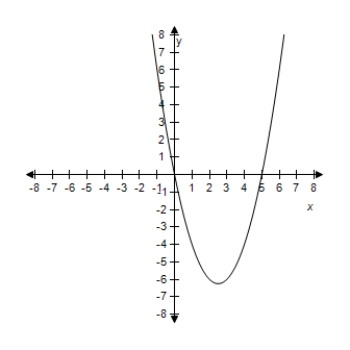 ?
?
B)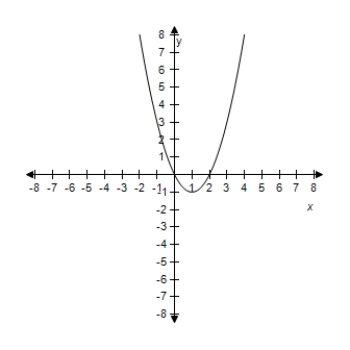 ?
?
C)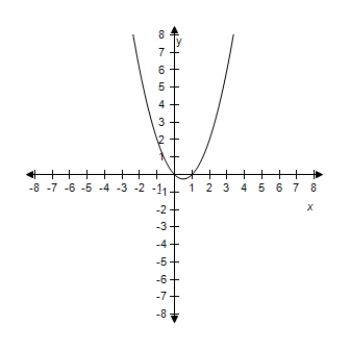 ?
?
D)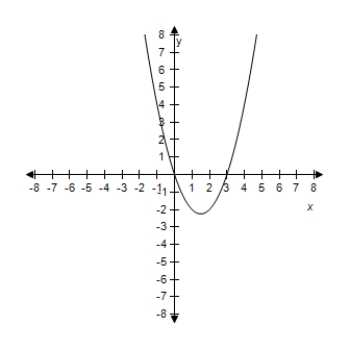 ?
?
E)?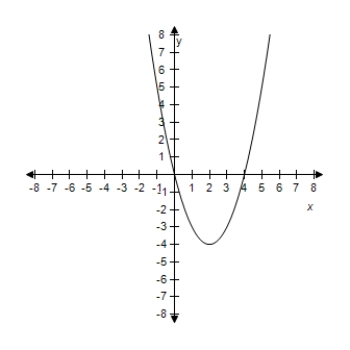 ?
?
A)?
 ?
?B)
 ?
?C)
 ?
?D)
 ?
?E)?
 ?
?
Unlock Deck
Unlock for access to all 61 flashcards in this deck.
Unlock Deck
k this deck
20
Select the graph of the function .Compare the graph of this function with the graph of . ?
A)?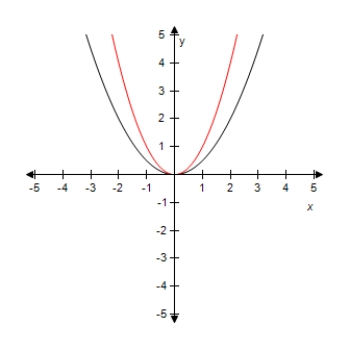 Vertical shrink.
Vertical shrink.
B)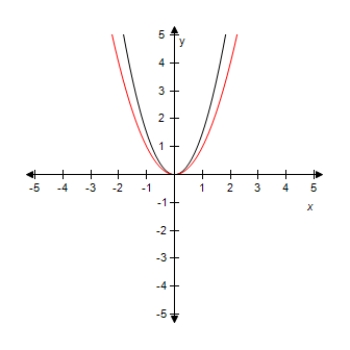 ?Vertical stretch.
?Vertical stretch.
C) ?
?
?
Vertical stretch and reflection in the x-axis.
D)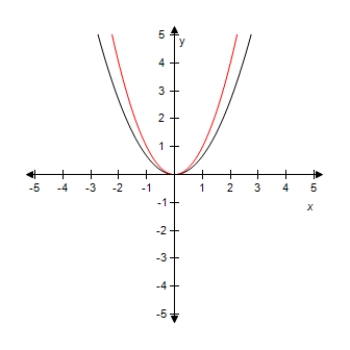 ?
?
?
Vertical shrink.
E)?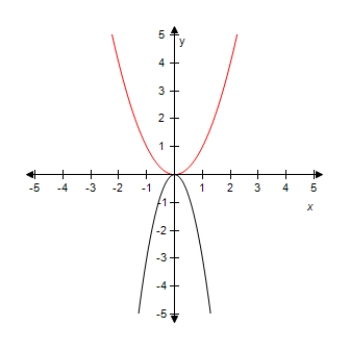 ?
?
?
Vertical stretch and reflection in the x-axis.
A)?
 Vertical shrink.
Vertical shrink.B)
 ?Vertical stretch.
?Vertical stretch.C)
 ?
??
Vertical stretch and reflection in the x-axis.
D)
 ?
??
Vertical shrink.
E)?
 ?
??
Vertical stretch and reflection in the x-axis.

Unlock Deck
Unlock for access to all 61 flashcards in this deck.
Unlock Deck
k this deck
21
A small theater has a seating capacity of 2000.When the ticket price is $20,attendance is 1500.For each $1 decrease in price,attendance increases by 50.The revenue R of the theater as a function of ticket price x is as follows What ticket price will yield a maximum revenue?
A)$55.00 ?
B)$35.00 ?
C)$25.00 ?
D)$45.00 ?
E)$65.00 ?
A)$55.00 ?
B)$35.00 ?
C)$25.00 ?
D)$45.00 ?
E)$65.00 ?

Unlock Deck
Unlock for access to all 61 flashcards in this deck.
Unlock Deck
k this deck
22
Determine the x-intercept(s)of the quadratic function .
A)
B)
C)
D)
E)no x-intercept(s)
A)
B)
C)
D)
E)no x-intercept(s)

Unlock Deck
Unlock for access to all 61 flashcards in this deck.
Unlock Deck
k this deck
23
Compare the graph of with .
A) shifts left 3 units,shifts downward 6 units,and stretches by a factor of 7.
B) shifts left 3 units,shifts upward 6 units,and stretches by a factor of 7.
C) shifts right 3 units,shifts downward 6 units,and shrinks by a factor of .
D) shifts right 3 units,shifts upward 6 units,and shrinks by a factor of .
E) shifts right 3 units,shifts upward 6 units,and stretches by a factor of 7.
A) shifts left 3 units,shifts downward 6 units,and stretches by a factor of 7.
B) shifts left 3 units,shifts upward 6 units,and stretches by a factor of 7.
C) shifts right 3 units,shifts downward 6 units,and shrinks by a factor of .
D) shifts right 3 units,shifts upward 6 units,and shrinks by a factor of .
E) shifts right 3 units,shifts upward 6 units,and stretches by a factor of 7.

Unlock Deck
Unlock for access to all 61 flashcards in this deck.
Unlock Deck
k this deck
24
The total revenue R earned (in thousands of dollars)from manufacturing handheld video games is given by? ? where p is the price per unit (in dollars).
?
Find the revenue when the price per unit is $20.
?
A)$14,000,300
B)$14,000,200
C)$14,000,400
D)$14,000,000
E)$14,000,100
?
Find the revenue when the price per unit is $20.
?
A)$14,000,300
B)$14,000,200
C)$14,000,400
D)$14,000,000
E)$14,000,100

Unlock Deck
Unlock for access to all 61 flashcards in this deck.
Unlock Deck
k this deck
25
From the graph of the quadratic function ,determine the equation of the axis of symmetry.
A)
B)
C)
D)
E)
A)
B)
C)
D)
E)

Unlock Deck
Unlock for access to all 61 flashcards in this deck.
Unlock Deck
k this deck
26
The profit P (in hundreds of dollars)that a company makes depends on the amount x (in hundreds of dollars)the company spends on advertising according to the model? ? What expenditure for advertising will yield a maximum profit?
?
A)30
B)0.5
C)230
D)15
E)115
?
A)30
B)0.5
C)230
D)15
E)115

Unlock Deck
Unlock for access to all 61 flashcards in this deck.
Unlock Deck
k this deck
27
The total revenue R earned per day (in dollars)from a pet-sitting service is given by? ? where p is the price charged per pet (in dollars).
?
Find the revenue when the price per pet is $3.
?
A)$372.00
B)$352.00
C)$382.00
D)$362.00
E)$342.00
?
Find the revenue when the price per pet is $3.
?
A)$372.00
B)$352.00
C)$382.00
D)$362.00
E)$342.00

Unlock Deck
Unlock for access to all 61 flashcards in this deck.
Unlock Deck
k this deck
28
Find the values of b such that the function has the given minimum value -74. ?
A)±16
B)±22
C)±14
D)±18
E)±20
A)±16
B)±22
C)±14
D)±18
E)±20

Unlock Deck
Unlock for access to all 61 flashcards in this deck.
Unlock Deck
k this deck
29
Determine the x-intercept(s)of the quadratic function .
A)
B)
C)no x-intercept(s)
D)
E)
A)
B)
C)no x-intercept(s)
D)
E)

Unlock Deck
Unlock for access to all 61 flashcards in this deck.
Unlock Deck
k this deck
30
Determine the vertex of the graph of the quadratic function .
A)
B)
C) ?
D)
E)
A)
B)
C) ?
D)
E)

Unlock Deck
Unlock for access to all 61 flashcards in this deck.
Unlock Deck
k this deck
31
Find the values of b such that the function has the given maximum value 94. ?
A)±32
B)±28
C)±26
D)±30
E)±34
A)±32
B)±28
C)±26
D)±30
E)±34

Unlock Deck
Unlock for access to all 61 flashcards in this deck.
Unlock Deck
k this deck
32
A small theater has a seating capacity of 2000.When the ticket price is $20,attendance is 1500.For each $1 decrease in price,attendance increases by 125.Write the revenue R of the theater as a function of ticket price x. ?
A)
B)
C)
D)
E)
A)
B)
C)
D)
E)

Unlock Deck
Unlock for access to all 61 flashcards in this deck.
Unlock Deck
k this deck
33
From the graph of the quadratic function ,determine the equation of the axis of symmetry.
A)
B)
C)
D)
E)
A)
B)
C)
D)
E)

Unlock Deck
Unlock for access to all 61 flashcards in this deck.
Unlock Deck
k this deck
34
Find the values of b such that the function has the given minimum value 10. ?
A)±18
B)±22
C)±14
D)±20
E)±16
A)±18
B)±22
C)±14
D)±20
E)±16

Unlock Deck
Unlock for access to all 61 flashcards in this deck.
Unlock Deck
k this deck
35
Compare the graph of with .
A) shifts left 6 units,shifts downward 1 units,and shrinks by a factor of .
B) shifts right 6 units,shifts upward 1 units,and shrinks by a factor of .?
C) shifts left 36 units,shifts upward 1 units,and shrinks by a factor of .
D) shifts right 36 units,shifts upward 1 units,and shrinks by a factor of .
E) shifts right 6 units,shifts downward 1 units,and shrinks by a factor of .
A) shifts left 6 units,shifts downward 1 units,and shrinks by a factor of .
B) shifts right 6 units,shifts upward 1 units,and shrinks by a factor of .?
C) shifts left 36 units,shifts upward 1 units,and shrinks by a factor of .
D) shifts right 36 units,shifts upward 1 units,and shrinks by a factor of .
E) shifts right 6 units,shifts downward 1 units,and shrinks by a factor of .

Unlock Deck
Unlock for access to all 61 flashcards in this deck.
Unlock Deck
k this deck
36
The total revenue R earned per day (in dollars)from a pet-sitting service is given by? ? where p is the price charged per pet (in dollars).
?
Find the price that will yield a maximum revenue.
?
A)$7.00
B)$10.00
C)$8.00
D)$6.00
E)$9.00
?
Find the price that will yield a maximum revenue.
?
A)$7.00
B)$10.00
C)$8.00
D)$6.00
E)$9.00

Unlock Deck
Unlock for access to all 61 flashcards in this deck.
Unlock Deck
k this deck
37
Write the quadratic function in standard form.
A)
B)
C)
D)
E)
A)
B)
C)
D)
E)

Unlock Deck
Unlock for access to all 61 flashcards in this deck.
Unlock Deck
k this deck
38
Find the standard form of the quadratic function shown below:? 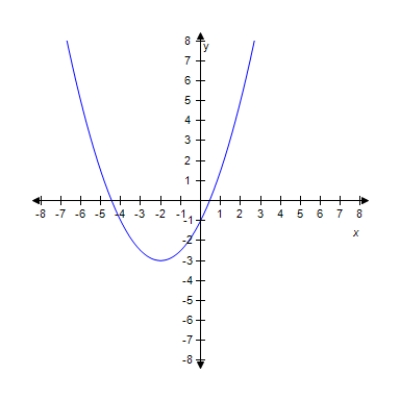 ?
?
A)
B)
C)
D)
E)
 ?
?A)
B)
C)
D)
E)

Unlock Deck
Unlock for access to all 61 flashcards in this deck.
Unlock Deck
k this deck
39
Find the values of b such that the function has the given maximum value 65. ?
A)±18
B)±22
C)±24
D)±20
E)±26
A)±18
B)±22
C)±24
D)±20
E)±26

Unlock Deck
Unlock for access to all 61 flashcards in this deck.
Unlock Deck
k this deck
40
The total revenue R earned (in thousands of dollars)from manufacturing handheld video games is given by? ? where p is the price per unit (in dollars).
?
Find the unit price that will yield a maximum revenue.
?
A)$42.00
B)$40.00
C)$41.00
D)$39.00
E)$38.00
?
Find the unit price that will yield a maximum revenue.
?
A)$42.00
B)$40.00
C)$41.00
D)$39.00
E)$38.00

Unlock Deck
Unlock for access to all 61 flashcards in this deck.
Unlock Deck
k this deck
41
?Write the standard form of the equation of the parabola that has a vertex at (-6,-5)and passes through the point (-8,6). ?
A)?
B)?
C)?
D)?
E)?
A)?
B)?
C)?
D)?
E)?

Unlock Deck
Unlock for access to all 61 flashcards in this deck.
Unlock Deck
k this deck
42
A farmer has 216 feet of fencing and wants to build two identical pens for his prize-winning pigs.The pens will be arranged as shown.Determine the dimensions of a pen that will maximize its area. 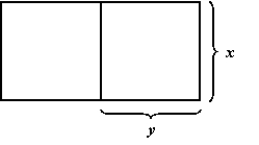
A)
B)
C)
D)
E)

A)
B)
C)
D)
E)

Unlock Deck
Unlock for access to all 61 flashcards in this deck.
Unlock Deck
k this deck
43
A Norman window has the shape of a rectangle surmounted by a semicircle as in the figure below.If the perimeter of the window is 40 ft,express the area,A,as a function of the width,x,of the window. 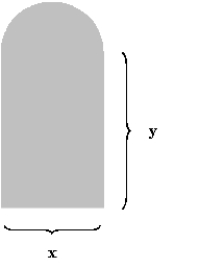
A)
B)
C)
D)
E)

A)
B)
C)
D)
E)

Unlock Deck
Unlock for access to all 61 flashcards in this deck.
Unlock Deck
k this deck
44
Write the quadratic function in standard form.
A)
B)
C)
D)
E)
A)
B)
C)
D)
E)

Unlock Deck
Unlock for access to all 61 flashcards in this deck.
Unlock Deck
k this deck
45
Find the vertex of the parabola. y = x2 - 12x + 36
A)(6,0)
B)(0,6)
C)(-24,0)
D)(36,0)
E)(6,-24)
A)(6,0)
B)(0,6)
C)(-24,0)
D)(36,0)
E)(6,-24)

Unlock Deck
Unlock for access to all 61 flashcards in this deck.
Unlock Deck
k this deck
46
Graph the given function.? ? 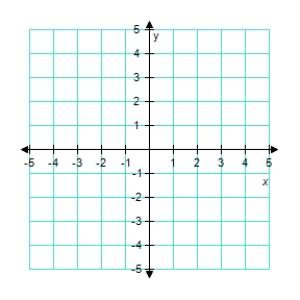
A)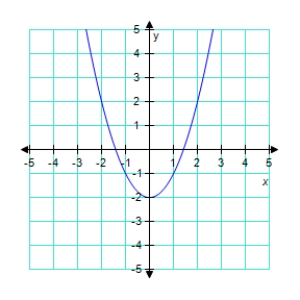 ?
?
B)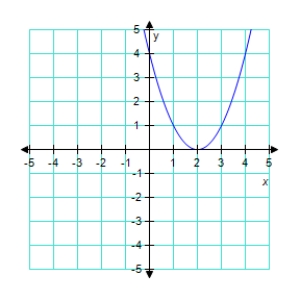 ?
?
C)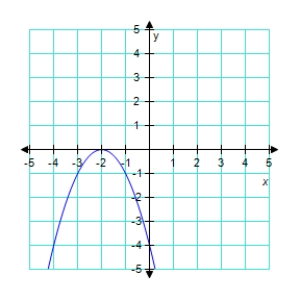 ?
?
D)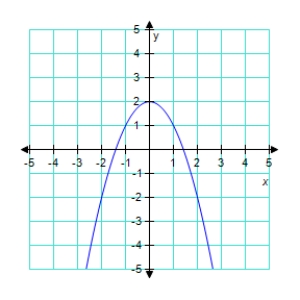 ?
?
E)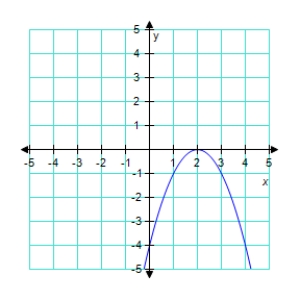 ?
?

A)
 ?
?B)
 ?
?C)
 ?
?D)
 ?
?E)
 ?
?
Unlock Deck
Unlock for access to all 61 flashcards in this deck.
Unlock Deck
k this deck
47
Graph the quadratic function.
F (x)= x2 + 2x
A)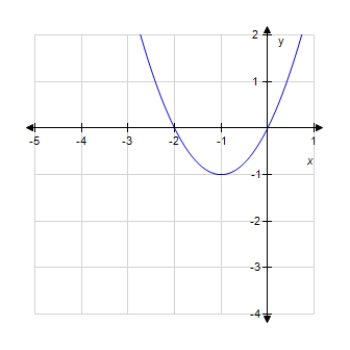
B)
C)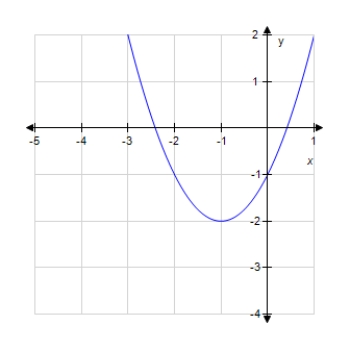
D)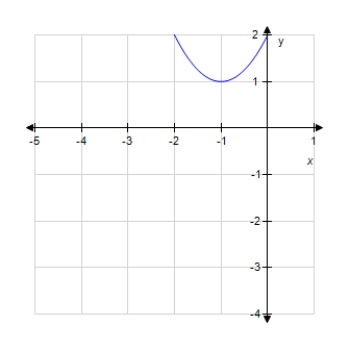
F (x)= x2 + 2x
A)

B)

C)

D)


Unlock Deck
Unlock for access to all 61 flashcards in this deck.
Unlock Deck
k this deck
48
Find two positive real numbers whose product is a maximum and whose sum is 160.
A)
B)
C)
D)
E)
A)
B)
C)
D)
E)

Unlock Deck
Unlock for access to all 61 flashcards in this deck.
Unlock Deck
k this deck
49
Find the vertex of the parabola.
Y = 3x2 - 1
A)(-1,3)
B)(0,-1)
C)(3,-1)
D)(-1,0)
E)(0,3)
Y = 3x2 - 1
A)(-1,3)
B)(0,-1)
C)(3,-1)
D)(-1,0)
E)(0,3)

Unlock Deck
Unlock for access to all 61 flashcards in this deck.
Unlock Deck
k this deck
50
Write the standard form of the equation of the parabola that has a vertex at and passes through the point .
A)
B)
C)
D)
E)
A)
B)
C)
D)
E)

Unlock Deck
Unlock for access to all 61 flashcards in this deck.
Unlock Deck
k this deck
51
The function is one-to-one on the domain .Find . ?
A)
B)
C)
D)
E)
A)
B)
C)
D)
E)

Unlock Deck
Unlock for access to all 61 flashcards in this deck.
Unlock Deck
k this deck
52
Graph the quadratic function.? ?
A)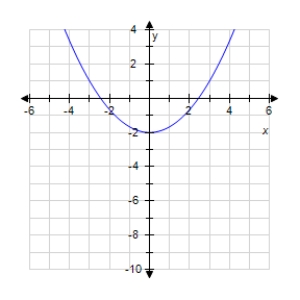 ?
?
B)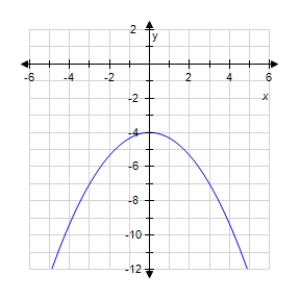 ?
?
C) ?
?
D)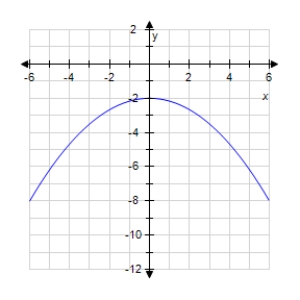 ?
?
A)
 ?
?B)
 ?
?C)
 ?
?D)
 ?
?
Unlock Deck
Unlock for access to all 61 flashcards in this deck.
Unlock Deck
k this deck
53
Find the vertex of the parabola.
y = x2 + 14x + 49
Please enter your ANS. as an ordered pair.
y = x2 + 14x + 49
Please enter your ANS. as an ordered pair.

Unlock Deck
Unlock for access to all 61 flashcards in this deck.
Unlock Deck
k this deck
54
The height,h(x),of a punted rugby ball is given by where x is the horizontal distance in feet from the point where the ball is punted.How far,horizontally,is the ball from the kicker when it is at its highest point?
A)
B)
C)
D)
E)
A)
B)
C)
D)
E)

Unlock Deck
Unlock for access to all 61 flashcards in this deck.
Unlock Deck
k this deck
55
Find two positive real numbers whose product is a maximum and whose sum of the first number and four times the second is 160.
A)
B)
C)
D)
E)
A)
B)
C)
D)
E)

Unlock Deck
Unlock for access to all 61 flashcards in this deck.
Unlock Deck
k this deck
56
Find the vertex of the parabolic graph of the equation. y = 4(x - 5)2 + 7
A)(5,0)
B)(25,7)
C)(5,4)
D)(7,5)
E)(5,7)
A)(5,0)
B)(25,7)
C)(5,4)
D)(7,5)
E)(5,7)

Unlock Deck
Unlock for access to all 61 flashcards in this deck.
Unlock Deck
k this deck
57
Graph the quadratic function.
F (x)= - 4x2 + 2
A)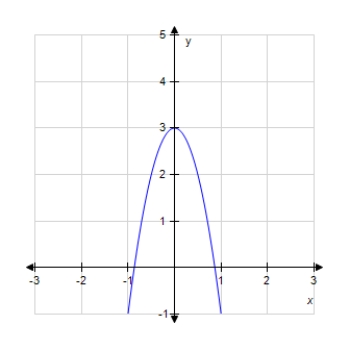
B)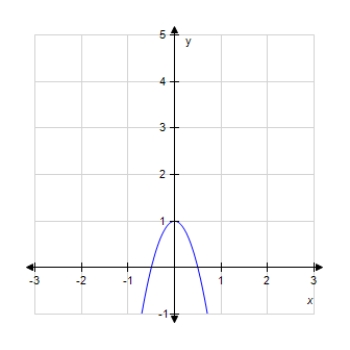
C)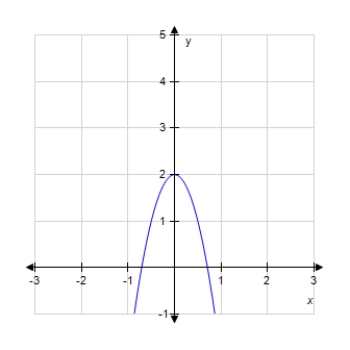
D)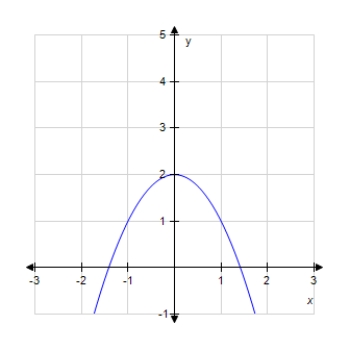
F (x)= - 4x2 + 2
A)

B)

C)

D)


Unlock Deck
Unlock for access to all 61 flashcards in this deck.
Unlock Deck
k this deck
58
Find the vertex of the parabola. y = - x2 + 16x - 60
A)(-8,4)
B)(8,4)
C)(-8,-4)
D)(8,-30)
E)(4,8)
A)(-8,4)
B)(8,4)
C)(-8,-4)
D)(8,-30)
E)(4,8)

Unlock Deck
Unlock for access to all 61 flashcards in this deck.
Unlock Deck
k this deck
59
Write the quadratic function in standard form.
A)
B)
C)
D)
E)
A)
B)
C)
D)
E)

Unlock Deck
Unlock for access to all 61 flashcards in this deck.
Unlock Deck
k this deck
60
Graph the quadratic function.
F (x)= - x2 - 4x + 1
A)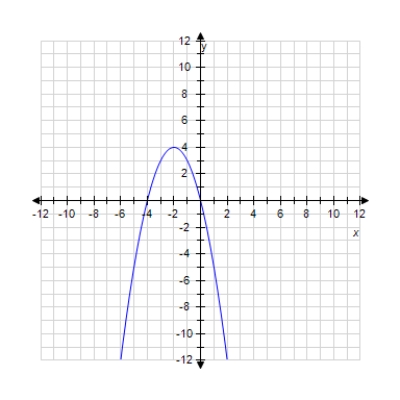
B)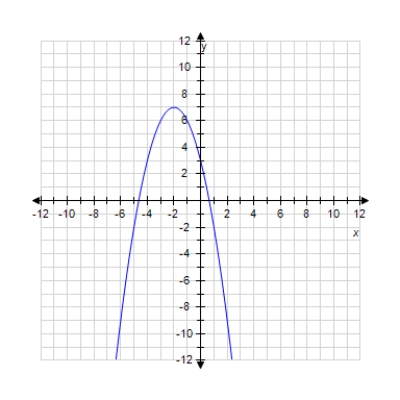
C)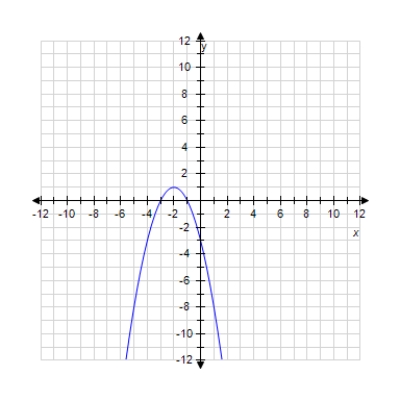
D)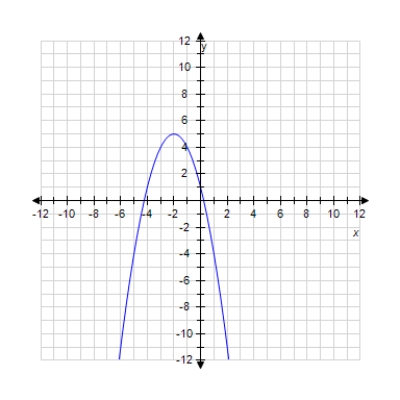
F (x)= - x2 - 4x + 1
A)

B)

C)

D)


Unlock Deck
Unlock for access to all 61 flashcards in this deck.
Unlock Deck
k this deck
61
Find the inverse of the one-to-one function.? ?
A)
B)
C)
D)
E)none of the above
A)
B)
C)
D)
E)none of the above

Unlock Deck
Unlock for access to all 61 flashcards in this deck.
Unlock Deck
k this deck



